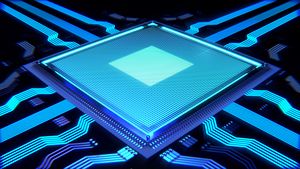President Vladimir Putin made headlines last year when he said, “Whoever leads in AI will be the ruler of the world.” His comments came at a time when artificial intelligence (AI) had freshly burst into the public consciousness, riding a wave of exhaustive public debate centered on the so-called “AI Race.” Governments all around the world are scrambling to make the most of the coming paradigm shift, which is expected to increase global GDP by $15.7 trillion or 14 percent by 2030, improving productivity and efficiency in a wide range of sectors, including defense.
Among these countries is India, which is a relatively late entrant in the race, but has massive potential in AI research and application. While it only released a national AI strategy earlier this year, research and development (R&D) on the applications of AI in defense has been making slow but steady progress for three decades, making India one of the dark horses to look out for in the AI race.
Entering the AI Race
India certainly has the talent and expertise to be an AI power. It produced 643 widely-cited AI research papers in 2015, behind only the United States and China, and churned out 2.6 million STEM graduates in 2016. Despite this, until quite recently AI research in the country was primarily housed in universities, namely the Indian Institute of Technology (IIT) and Indian Institute of Science (IISc), and was focused on fintech and industrial applications. AI R&D activity in the public sector was limited, although leaders like Prime Minister Narendra Modi had taken note of the emerging trend.
The turning point came in 2018, when the Indian government established a national program on artificial intelligence during the Union budget session. The immediate driver of this policy was China’s AI Strategy, released in July 2017, which laid out a comprehensive national-level plan to make China the global leader in AI. India’s AI program has a broad mandate, encapsulating digital economy, the Internet of Things (IoT), and basic R&D. It established the AI Taskforce, with members from the Ministries of Commerce, Electronics and Information Technology (MeitY), Defense and the NITI Aayog, as well as academia and the private sector. The taskforce’s report, released in March 2018, lays out a series of recommendations to address the challenges India faces in AI development and application:
- Shortage of data as well as necessary infrastructure to process and distribute big data securely
- Shortage of AI talent to manage AI systems
- High cost of deploying AI systems
The report recommends setting up a National AI Mission (N-AIM) to coordinate public AI activity; establish a “network of alliances with academia, industry and startups”; create a secure “data marketplace”; and workforce training. Among its suggestions, the taskforce highlights national security, mentioning how unmanned vehicles and autonomous weaponry present both an ethical challenge and an opportunity for improved efficiency.
Applications in Defense
While there is no official military strategy document on the uses of AI in the battlefield yet, there are several potential applications that, as Shashank Reddy of Carnegie India puts it, are “low-hanging fruit.” Among these applications are logistics and supply-chain management, cyber operations, and intelligence and reconnaissance.
R&D on defense applications of AI is conducted under the Center for Artificial Intelligence and Robotics (CAIR), established by the Defense Research and Development Organization (DRDO) in 1986. In the three decades since, CAIR has worked on building integrated, networked information systems, data mining tools, robotics, and other AI-enabled products for the Indian military.
AI would greatly improve the ability of Indian forces to secure the 8,600 miles of land borders it shares with other countries. For instance, Border Security Force (BSF) is working on a pilot program called the Comprehensive Integrated Border Management System (CIBMS), which would put in a place an electronic surveillance system monitored by BSF personnel. Integrating AI-enabled image recognition and automated alerts into the system would greatly aid in the speed and efficiency of a BSF response.
Another practical application of AI is in improving battlefield operations using all-terrain reconnaissance. In February 2018, the DRDO successfully tested the Rustom 2 UAV, and is reportedly developing a “Multi Agent Robotics Framework” (MARF), a system that will enable the Indian Army’s many battlefield robots to collaborate with each other on surveillance and reconnaissance. The DRDO is also developing Chemical, Biological, Radiological, Nuclear, and Explosive (CBRNe) UAVs to detect radiation, as well as Remotely-Operated Vehicles (ROVs) for surveillance and IED disposal.
For India, AI could be both a means of modernizing domestically, as well as establishing itself as a major exporter of AI-enabled products. To do so, it is working to build bilateral partnerships with science and technology leaders. For instance, Japan’s national security advisor recently announced a partnership with India on the development of unmanned ground vehicles and robotics. Additionally, in April 2018, India’s Mahindra Defense announced a partnership with Israeli drone-maker Aeronautics Ltd. to build unmanned underwater vehicles for the Indian Navy.
India is at a pivotal juncture where the implementation of effective AI R&D programs are essential to helping it keep pace with the rest of the world.
Trisha Ray is a Program Assistant with Asia Society Policy Institute. She holds an M.A in Security Studies from Georgetown University, and writes on security issues in India and the Korean Peninsula.

































